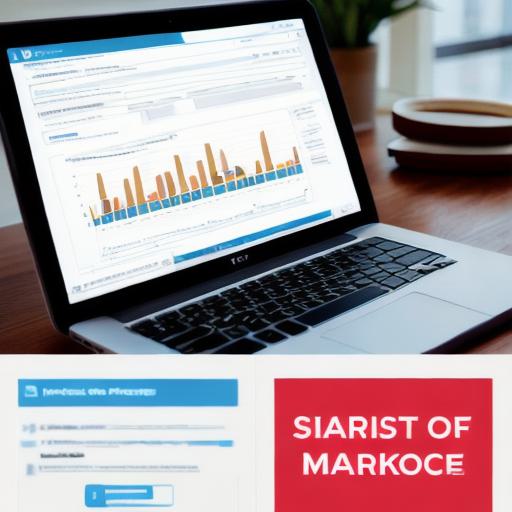The Ultimate Guide to Marketing Tools for Educational Purposes: Boosting Your Online Presence and Attracting More Students
As an educational institution, marketing is crucial to attract more students, expand your reach, and increase enrollment. However, choosing the right marketing tools can be a daunting task. With so many options available in the market, it can be challenging to identify the most effective and efficient tools that will help you achieve your marketing goals. In this comprehensive guide, we will explore some of the best marketing tools for educational purposes and how they can help boost your online presence and attract more students.
Table of Contents
1.
Introduction: Why Marketing is Essential for Educational Institutions
2.
The Importance of Search Engine Optimization (SEO) in Marketing
3.
Social Media Marketing Tools for Educational Institutions
4.
Content Marketing Tools for Educational Institutions
5.
Email Marketing Tools for Educational Institutions
6. Influencer Marketing Tools for Educational Institutions
7. Video Marketing Tools for Educational Institutions
8. Analytics and Tracking Tools for Educational Institutions
9. FAQs: Frequently Asked Questions About Marketing Tools for Educational Purposes
10.
Conclusion
: How to Choose the Right Marketing Tool for Your Educational Institution
Introduction: Why Marketing is Essential for Educational Institutions
Marketing is essential for educational institutions because it helps them attract more students, expand their reach, and increase enrollment. With an increasing number of students opting for online education, marketing has become crucial for institutions to stand out in the crowded online space. In this section, we will explore some of the key benefits of marketing for educational institutions.
Benefits of Marketing for Educational Institutions
- Attract more students: With effective marketing strategies, educational institutions can attract more students who are interested in their programs and courses. This can help increase enrollment and revenue.
- Expand reach: Marketing can help educational institutions expand their reach to a wider audience, including students from different geographical locations and countries. This can help them attract students who might not have considered their institution before.
- Increase brand awareness: Effective marketing strategies can help educational institutions increase brand awareness and recognition, making them more visible to potential students and alumni.
- Improve retention: Marketing can also help educational institutions improve retention rates by keeping students engaged and informed about the latest developments on campus. This can lead to higher student satisfaction and a better overall academic experience.
The Importance of Search Engine Optimization (SEO) in Marketing
Search engine optimization (SEO) is a critical component of any marketing strategy for educational institutions. SEO involves optimizing your website and its content to rank higher in search engine results pages (SERPs). This can help attract more organic traffic to your website, leading to increased enrollment and revenue. In this section, we will explore some of the key benefits of SEO for educational institutions.
Benefits of SEO for Educational Institutions
- Increased visibility: By optimizing your website and its content for search engines, you can increase the visibility of your institution in SERPs. This can help attract more organic traffic to your website, leading to increased enrollment and revenue.
- Improved user experience: Effective SEO involves creating high-quality, relevant content that is easy to read and navigate. This can lead to a better overall user experience for potential students, making them more likely to engage with your institution and apply.
- Higher credibility: Appearing at the top of SERPs can also increase the credibility of your institution in the eyes of potential students. This can help attract more students who are looking for a reputable educational institution.
- Cost-effective: SEO is a cost-effective marketing strategy that can deliver long-term results. Unlike paid advertising, SEO does not require ongoing investments to maintain visibility in search engines.
Social Media Marketing Tools for Educational Institutions
Social media has become an essential part of modern marketing strategies for educational institutions. Social media platforms provide a unique opportunity to connect with potential students, alumni, and current students. In this section, we will explore some of the best social media marketing tools for educational institutions.
Best
Social Media Marketing Tools for Educational Institutions
1. Hootsuite: Hootsuite is a popular social media management tool that allows you to schedule and publish content across multiple social media platforms simultaneously. This can save time and help ensure consistency in your social media presence.
2. Buffer: Buffer is another social media scheduling tool that allows you to schedule posts, monitor analytics, and engage with your audience across multiple social media platforms.
3. Canva: Canva is a graphic design tool that allows you to create high-quality visual content for social media, including images, infographics, and videos. This can help make your social media presence more engaging and visually appealing.
A PLACE FOR A PICTURE #2
4. Sprout Social: Sprout Social is a social media management tool that allows you to manage your social media presence across multiple platforms, including Facebook, Twitter, Instagram, and LinkedIn. The tool also provides analytics and reporting features to track the success of your social media campaigns.
5. EdTech Magazine: EdTech Magazine is a popular social media platform for educational technology professionals. This platform can help you connect with other educators, share best practices, and stay up-to-date on the latest developments in education technology.
Content Marketing Tools for Educational Institutions
Content marketing is an effective way to attract and engage potential students. By creating high-quality, relevant content that addresses the needs and interests of your target audience, you can establish your institution as a thought leader in your field. In this section, we will explore some of the best content marketing tools for educational institutions.
Best
Content Marketing Tools for Educational Institutions
1. WordPress: WordPress is a popular content management system that allows you to create and manage a website or blog. The platform has a wide range of themes and plugins available that can help you create a professional-looking website that is optimized for search engines.
2. HubSpot: HubSpot is an all-in-one marketing, sales, and service platform that includes tools for content creation, social media management, and analytics. The platform also provides email marketing and lead generation features to help you attract and convert potential students.
3. Yoast SEO: Yoast SEO is a popular SEO plugin for WordPress that helps you optimize your website’s content for search engines. The tool includes features such as keyword analysis, content analysis, and meta tag optimization to help improve your search engine rankings.
4. Canva: Canva is a graphic design tool that allows you to create high-quality visual content for your website or blog. The platform includes a wide range of templates, images, and fonts that can be customized to match the branding of your institution.
5. Google Analytics: Google Analytics is a free web analytics service that allows you to track the performance of your website and its content. The tool provides detailed insights into user behavior, including how users arrive at your website, which pages they visit, and how long they stay on your site. This information can be used to optimize your content and improve your search engine rankings.
Email Marketing Tools for Educational Institutions
Email marketing is an effective way to communicate with potential and current students. By creating personalized emails that address the needs and interests of your target audience, you can establish a stronger relationship with your students and increase the likelihood of conversion. In this section, we will explore some of the best email marketing tools for educational institutions.
Best
Email Marketing Tools for Educational Institutions
1. Mailchimp: Mailchimp is a popular email marketing platform that allows you to create and send targeted emails to your subscribers. The platform includes features such as email templates, autoresponders, and A/B testing to help you optimize your email campaigns for maximum effectiveness.
2. Constant Contact: Constant Contact is another popular email marketing platform that allows you to create and send personalized emails to your subscribers. The tool includes features such as email templates, automation, and analytics to help you track the success of your email campaigns.
3. ConvertKit: ConvertKit is an email marketing platform that is specifically designed for bloggers and content creators. The tool includes features such as opt-in forms, landing pages, and automation to help you grow your email list and increase conversions.
4. Campaign Monitor: Campaign Monitor is a powerful email marketing platform that allows you to create and send targeted emails to your subscribers. The tool includes features such as email templates, automation, and analytics to help you optimize your email campaigns for maximum effectiveness.
5. Sendinblue: Sendinblue is an email marketing platform that allows you to create and send personalized emails to your subscribers. The tool includes features such as email templates, automation, and analytics to help you track the success of your email campaigns.
SEO Best Practices for Educational Institutions

Search engine optimization (SEO) is an essential part of modern marketing strategies for educational institutions. By optimizing your website and its content for search engines, you can attract more organic traffic to your site, leading to increased enrollment and revenue. In this section, we will explore some of the best SEO practices for educational institutions.
Best SEO Practices for Educational Institutions
1. Keyword research: Conducting keyword research is an essential part of any SEO strategy. By identifying the keywords and phrases that your target audience uses when searching for educational institutions, you can optimize your website’s content to attract more relevant traffic.
2. On-page optimization: On-page optimization involves optimizing individual pages on your website to improve their search engine rankings. This includes optimizing meta tags, headings, and content for target keywords and phrases.
3. Link building: Building high-quality backlinks from other authoritative websites can help improve your website’s search engine rankings. This includes reaching out to relevant websites and asking them to link to your content in exchange for a reciprocal link.
4. Content creation: Creating high-quality, relevant content that addresses the needs and interests of your target audience can help establish your institution as a thought leader in your field. This includes creating blog posts, infographics, and videos that provide value to your audience.
5. Local SEO: If your institution serves a specific geographic area, optimizing your website for local search can help attract more local traffic to your site. This includes adding location-based keywords to your content, setting up a Google My Business account, and building local citations.
Conclusion
Marketing strategies for educational institutions have evolved significantly in recent years, with a growing emphasis on digital channels such as social media, content marketing, and email marketing. By implementing the best practices outlined in this guide, educational institutions can create more effective marketing campaigns that attract and engage potential students, leading to increased enrollment and revenue.




